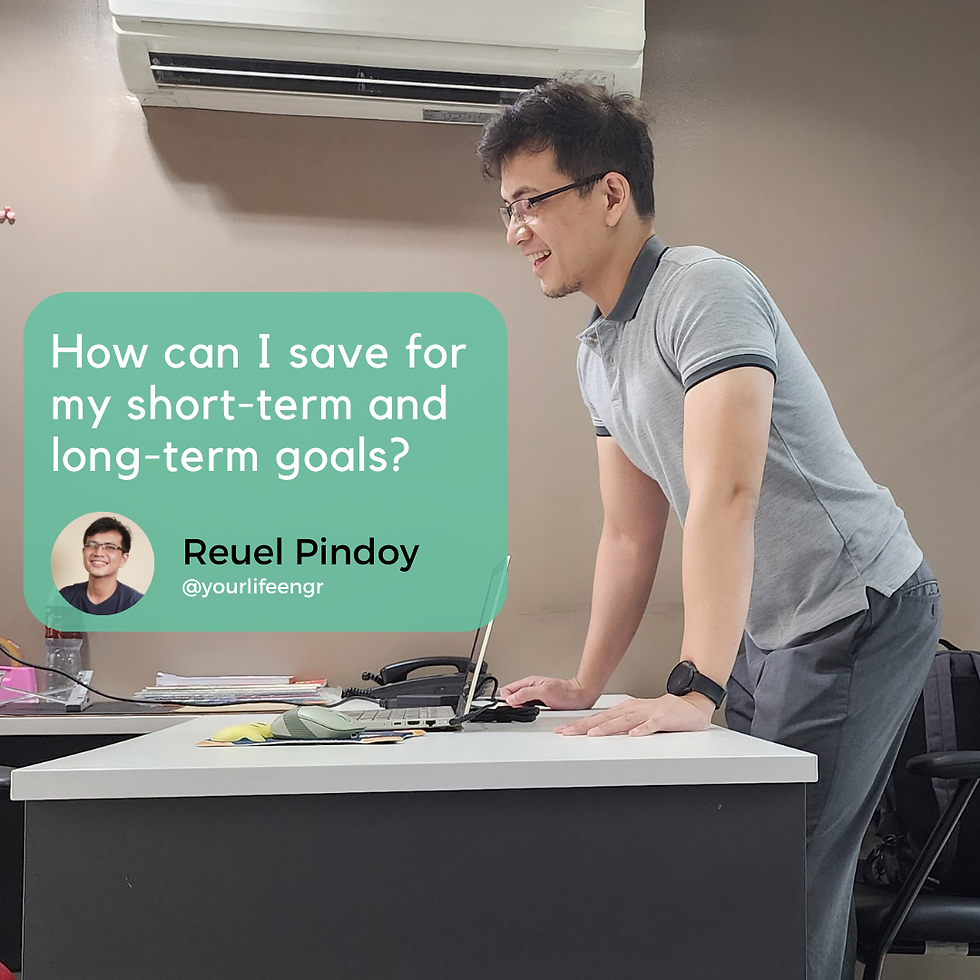We're getting into recession again? What's one thing you should prepare then?
- Reuel Pindoy

- Apr 15
- 4 min read
What would you do if your income suddenly disappeared next week?
Let’s be real! Adulting is expensive. Groceries cost more, rent goes up, and it feels like every time you breathe, something new needs to be paid for. Add to that global drama like economic wars, unstable markets, and local issues here in the Philippines. It’s no wonder most of us feel like we’re just trying to survive one GCash transaction at a time.

If you’re in your 20s or 30s, you’ve probably felt this: pressure to save, help your family, pay bills, and still have a life. Maybe you’re freelancing, working a 9-to-5, or juggling multiple rakets and YET, one unexpected event (like getting sick or losing a client) can mess up your whole budget.
That’s where an emergency fund comes in. Think of it as your financial armor. It keeps you from falling into debt traps or swiping your credit card out of panic. It gives you peace of mind and power over your money.
Let me guide you with a practical, easy-to-follow roadmap to help you start, grow, and protect your emergency fund EVEN IF you're earning just enough to get by. I have a bonus worksheet at the end of the article to help you!

What is an Emergency Fund (and Why You Need One)
An emergency fund is your “break glass in case of emergency” money. It's cash you set aside so you don’t go broke or buried in debt when something unexpected happens like getting sick, losing a job, or dealing with a family emergency.
The goal? Cash that’s easy to access, not invested, and only for true emergencies.
Having one helps you breathe easier. You won’t need to call your credit card company or borrow money from your friends or family just to get through tough times.
Why it matters:
Because car repairs, medical bills, and sudden expenses always hit when you’re least ready.
Because living paycheck-to-paycheck is stressful, FOR REAL.
Because peace of mind is priceless.
How Much Do You Need?
This depends on your lifestyle, responsibilities, and income. But here's a rule of thumb:
✅ Start with ₱20,000 - ₱50,000. That’s enough to cover basic emergencies for most people.
✅ Eventually, aim for 3 to 6 months' worth of your expenses. If you spend ₱20,000 a month, aim for ₱60,000 to ₱120,000.
Sounds impossible? Don’t stress. The point is to start small and stay consistent. Even ₱100 a week adds up!
Where to Keep Your Emergency Fund
Your emergency fund should be:
Easy to access (but not too easy that you’ll touch it for Shopee/Lazada sales)
Safe (so, no risky investments PLEASE LANG)
Separate from your everyday money
Best options:
A separate savings account (preferably with no debit card)
Digital banks with high interest (like Maya, CIMB, Tonik)
Avoid putting it in:
Stocks or mutual funds (too risky)
Time deposits (not liquid enough)
Think of it like your fire extinguisher. It’s there, ready. But you hope you never need to use it.

How to Start Building It (Even on a Tight Budget)
You don’t need a big salary to start. What you need is consistency and a plan.
Here’s how to begin:
Track your expenses. Know where your money goes. (Yes, including milk tea and delivery fees.)
Set a small savings goal. Start with ₱500, then ₱1,000, and so on.
Automate it. Set up automatic transfers to your emergency fund account right after payday.
Cut small leaks. Skip one milk tea a week? That’s ₱200 saved.
Use windfalls wisely. Got a bonus or raket pay? Save a chunk of it.
Remember, it’s not about the amount. It’s about the habit.
What Counts as an Emergency?
Let’s clear this up: An emergency is not a flash sale or a weekend trip.
✅ Real emergencies:
Hospital bills
Job loss
Urgent home/car repairs
Emergency travel for family
🚫 Not emergencies:
New phone upgrades
Concert tickets
Impulse shopping
GCash fund transfers “just in case”
If it doesn’t threaten your health, safety, or livelihood, don’t touch that fund.
How to Rebuild After Using Your Fund
Used your emergency fund? No worries. That’s exactly what it’s for. Here’s how to bounce back:
Pause other goals temporarily. Focus on rebuilding your safety net.
Adjust your budget. Add a “rebuild” line to your monthly plan.
Reflect. What triggered the emergency? Can you prevent it next time?
Stay consistent. Even small amounts rebuild faster than you think.
You survived one hit, you can do it again, stronger!
Your Peace of Mind Starts Now
You don’t need to be rich to have financial security. You just need to be INTENTIONAL.
Building your emergency fund isn’t about being perfect. It’s about preparing for real life: the messy, unpredictable, “didn’t-see-that-coming” moments.
So take the first step. Open that savings account.
Transfer that first ₱100. Your future self will thank you. 👊💸
Let’s protect your peace ONE PESO AT A TIME!
As a bonus and to help you more, let me share with you my SIMPLE and yet EFFECTIVE worksheet to help you start on building your Emergency Fund! Click the button below!
Stay safe and healthy, Life Engineers!



Comments